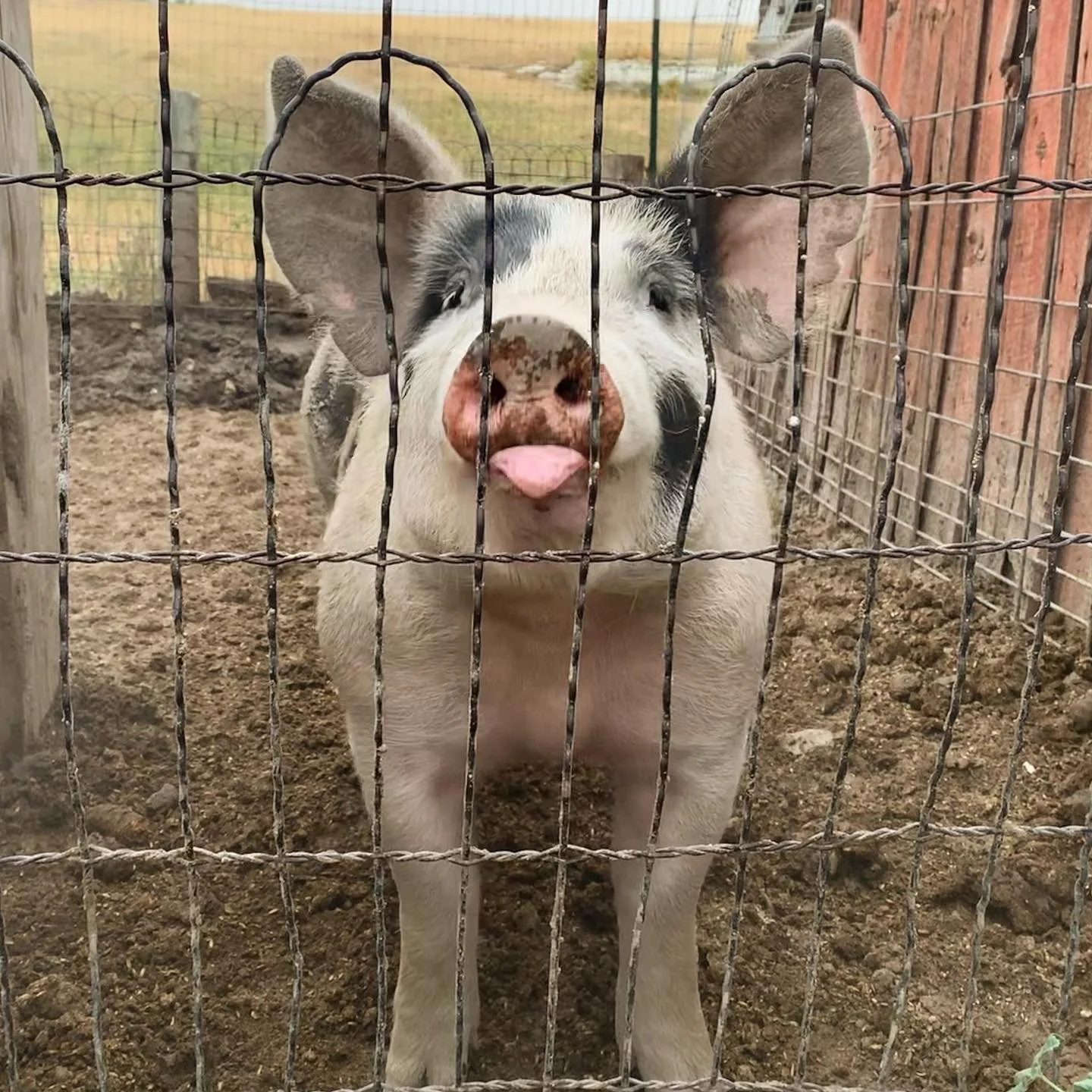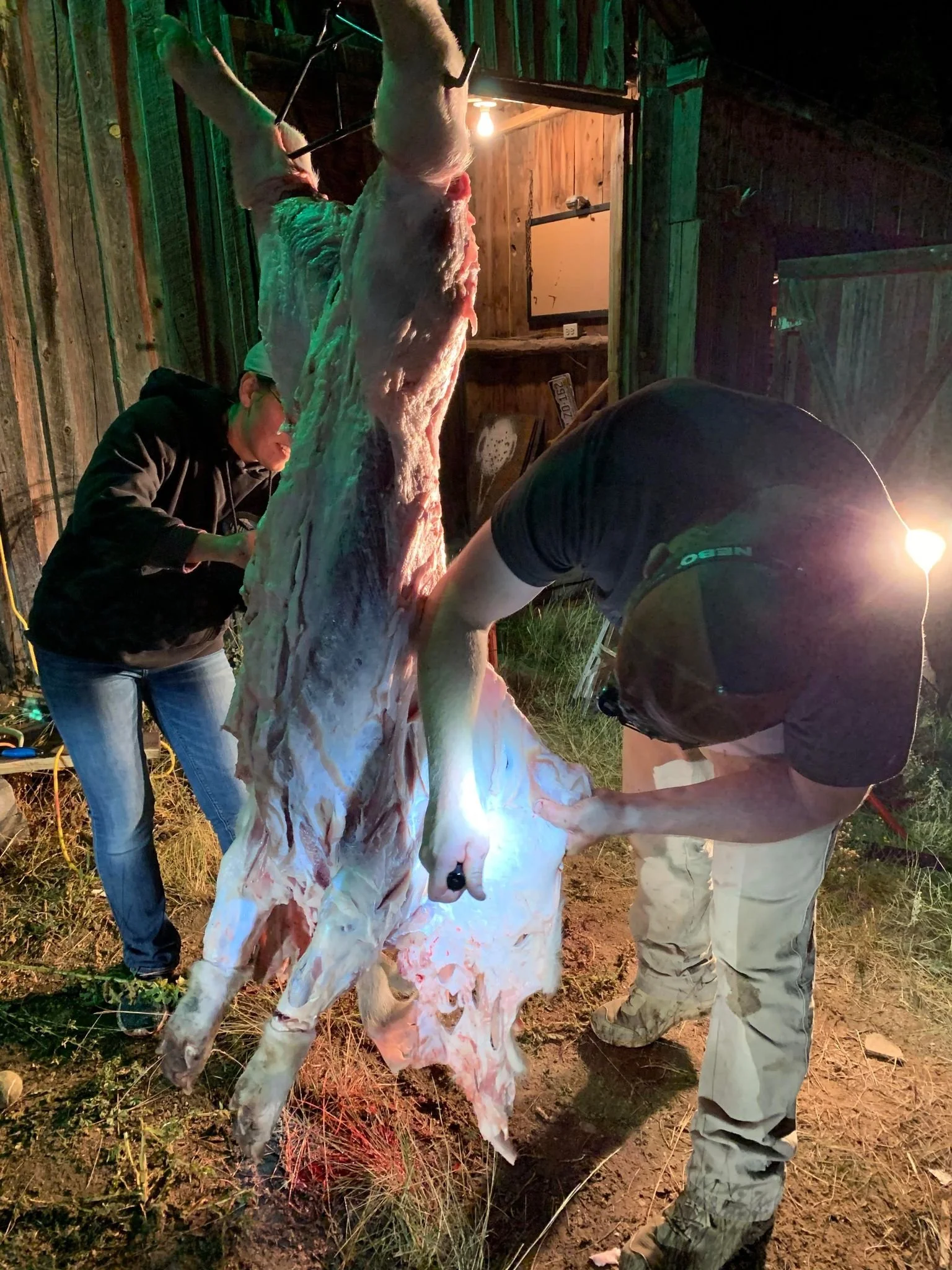5 Things We Learned From Butchering Hogs
1. Pigs are Smart
Fun fact! Pigs are smarter than most dogs and can learn patterns. That being said, you need to be methodical in your method of slaughtering to not over stress the animals prior to butchering. These hormones and adrenaline, during high stress can taint the meat.
Whether you start with the smarter or dumber pig, you need a plan. Harrison and I had a plan that worked for just one of the two pigs. So. . . your plan needs to be flexible.
We chose to kill one pig at a time so we first needed to separate them. We loaded one pig into a homemade plywood box trailer in order to prevent the pig that was left behind from becoming suspicious and nervous.
2. Shotguns Have Worked the Best So Far
A pig’s skull is extremely thick so you cannot just pick any form of execution, for lack of better words. The preferred method for slaughtering cows is a 22 caliber, as they have a much softer skull. We have used 22 before on pigs and it will penetrate but if it is not in the exact spot between the eyes, it may not kill them instantly. However, a shotgun with bird shot has enough upfront force to penetrate the skull while losing almost all of its velocity after impact. In other words, enough umph to get through the skull then slow down enough to stay inside the skull while killing the pig immediately.
3. Use a smooth, not serrated knife
Harrison has skinned dozens of animals from deer, to elk, from cows to antelope. However, he has always used the two knifes on the right in the picture above, to skin and gut each animal without any issues. These knifes still work great to gut a pig, but pigs have such thin skin, the serrated edge slices through instead of gliding along the meat as your skinning it.
We switched to the two knifes on the left for the second pig and noticed a huge difference in time and quality as we were working down the animal. We will be looking into a professional set of butchering knifes for next time!
4. Have Tubs and Game Bags Ready
There is nothing worse than picking up a pile of guts off of the dirt after it has missed or spilled out of a garbage bag or 5 gallon bucket. We had left over mineral tubs that we simply placed under the animal and caught the heads, hooves, and guts easily and then made cleanup more simple. We loaded the three tubs into the trailer and took them out to the far end of our property and dumped the waste that will later be cleaned up by coyotes and scavenger birds.
Game bags are also handy to have once the animal is prepared for processing. Not only does it help keep the meat clean, it also helps keep it cool. Unlike other bags that aren’t breathable and will trap the heat from the meat instead of letting it breathe.
First Pig slaughtered, skinned, gutted, halved, and ready to take to the butcher.
5. Have the Right Tools
Along with your shotgun, the right knives, tubs, and game bags, you also need some type of hoist to hang the animal. This not only helps the body drain, but also makes it easier to work on.
Harrison built a platform from the loft of our barn to support the 200-250 pound pigs hanging from the leg spreaders. The leg spreader is on a system of pulley, which you absolutely need of you are raising the pig by hand. A winch or tractor forks can also work great to hang a pig.
Of course each person has their own preference, and we are just sharing ours! If you have any questions leave a comment below.
Start: 6:20pm End: 9:20
Blurry picture due to the lighting and time of night, but first time slaughtering our own pigs is in the books!
Thank you for reading and learning along with us! Each time is a learning experience and we hope to keep perfecting this skill. We are incredibly grateful for the chance to raise these pigs and for the meat they provide our family and friends!








